Moniek Bloks's Blog, page 199
November 29, 2019
Marie of Bourbon – The Montpensier heiress
Marie of Bourbon was born on 15 October 1605 as the daughter of Henri de Bourbon, Duke of Montpensier and Henriette Catherine de Joyeuse, Duchess of Joyeuse in her own right. She would turn out to be their only child and her father died on 27 February 1608 – making her Duchess of Montpensier in her own right at the age of only 2. Her mother remarried in 1611 to Charles, Duke of Guise and went on to have a further ten children, though not all of them would live to adulthood.
Because of her large fortune and attractive title, she became engaged to the newborn Nicolas Henri of France, Duke of Orléans, second son of King Henry IV, at the age of 2. However, he would die in infancy and she then became engaged to Gaston of France, Duke of Orléans, her late fiancé’s younger brother. Gaston did not want to marry her but his brother King Louis XIII was determined to see them marry.
The wedding took place in the evening of 5 August 1626 in the Chapelle de l’Oratoire at Nantes in Brittany. It was solemnised by Cardinal Richelieu. At the time, Gaston was still the heir presumptive to his childless brother and Marie could possibly have become Queen consort. His brother and his wife, Anne of Austria, and his mother Marie de’ Medici were present as well. The bride wore a white satin dress and was bedecked in pearls. However, there was no music and the groom had not bothered to purchase new clothes. One member of his household later said, “A sadder wedding was never seen.” A fight over precedence between the Duchess of Rohan and the Duchess of Halluin also cast a shadow over the wedding.
The newlyweds were escorted to their rooms, with the King handing a nightshirt to his brother and then leading him to the nuptial chamber where his wife the Queen and his mother were putting Marie to bed. The consummation was interrupted by Marie’s mother who had been looking for her dog, who had accidentally been shut inside the nuptial chamber. Even with the interruption, it appears to have been a successful night and Marie gave birth to a daughter nine months and 14 days later. On 29 May 1627, Marie gave birth to a daughter – to the disappointment of her parents and “the whole realm of France.” The little girl was named Anne Marie Louise and just a week after her birth, Marie passed away from complications. The King’s physician simply recorded, “He (the King) went to the Louvre to see Madame die.”1
“Madame, the Duchesse d’Orleans, had been too transient a figure at the Court to leave a history. She was, indeed, remembered chiefly for her overweening airs at the prospect of her coming maternity, and of giving an heir to France. She had died within a year, but the little daughter whom she left behind, Anne-Marie-Louise, was growing up to be a personality.”2
Marie’s titles and riches passed to her little girl and even though she was not in the line of succession, she was still one of the most important children of France. Her daughter later wrote in her memoirs, “The beginning of the troubles of my house happened soon after my birth, for it was followed by the death of my mother, which greatly impaired the happy prospects which the rank I hold entitled me to expect. The great wealth left by my mother at her death, and of which I am sole heiress, might well, in the opinion of most people, console me for her loss. But I, who now appreciate what an advantage her care would have been in my education, and her influence joined to her tenderness for my settlement in life – I can myself never sufficiently deplore her loss.”3
The post Marie of Bourbon – The Montpensier heiress appeared first on History of Royal Women.
November 28, 2019
From Queen Victoria to King Leopold I of Belgium – 29 November 1841
From Queen Victoria to King Leopold I of Belgium – 29 November 1841
I would have written sooner, had I not been a little bilious, which made me very low, and not in spirits to write… They think that I shall not get my appetite and spirits back till I can get out of town; we are therefore going in a week at latest. I am going for a drive this morning, and am certain it will do me good. In all essentials, I am better, if possible than last year. Our little boy is a wonderfully strong and large child, with very large dark blue eyes, a finely formed but somewhat large nose, and a pretty little mouth; I hope and pray he may be like his dearest Papa. He is to be called Albert, and Edward is to be his second name. Pussy1, dear child, is still the great pet amongst us all, and is getting so fat and strong again. She is not at all pleased with her brother.
I have been suffering so from lowness that it made me quite miserable, and I know how difficult it is to fight against it. I wonder very much who our little boy will be like. You will understand how fervent my prayers and I am (sure) everbody’s must be, to see him resemble his angelic dearest Father in every, every respect, both in body and mind. Oh! My dearest uncle, I am sure if you knew how happy, how blessed I feel, and how proud I feel in possessing such a perfect being as my husband, as he is, and if you think that you have been instrumental in bringing about this union, it must gladden your heart! How happy should I be to see our child grow up just like him! Dear Pussy travelled with us and behaved like a grown-up person, so quiet and looking about and coquetting with the Hussars on either side of the carriage. Now adieu!2
The post From Queen Victoria to King Leopold I of Belgium – 29 November 1841 appeared first on History of Royal Women.
November 27, 2019
The Bonaparte Women: Charlotte Bonaparte Gabrielli
Charlotte Bonaparte was born at Saint-Maximin-la-Sainte-Baume on 22 February 1795 as the daughter of Lucien Bonaparte, a younger brother of Napoleon Bonaparte, and his first wife, Christine Boyer. She was their eldest daughter. A brother was stillborn the following year, followed by a sister who lived for just a few hours. Her younger sister was Christine-Egypta, who was born in 1798. From her grandmother Letizia, Charlotte received the nickname “Lolotte.” Their mother died on 14 May 1800 after an illness; she was still only 28 years old.
Charlotte spent her early childhood in France and Spain. From 1804, she received a more formal education from nuns in Italy. As early as 1807, she was considered as a possible bride for the future Ferdinand VII of Spain. However, her father and uncle could not agree on the conditions, one of them being that Lucien should divorce his second wife – Charlotte’s stepmother Alexandrine de Bleschamp and that Charlotte’s education should be continued in Paris. Lucien said, “What? Can they expect me to put my child into the hands of people who will poison her mind against my wife?” The relationship between the two brothers deteriorated as Lucien refused to abandon his wife – as his brother Jérôme had done with his wife, Elizabeth. By 1807, she had borne him four children.
However, by 1810 he could see the advantages of her receiving an education in Paris and his mother promised to care for the girl and to see her suitably married. On 8 March 1810, the 15-year-old Charlotte was delivered into her grandmother’s hands. Nevertheless, the family continued to press for Lucien and Alexandrine’s divorce. The quarrel continued, and Lucien made Charlotte leave Paris the following June. She returned to her father and stepmother, who then attempted to sail for the United States. They were intercepted by the British and were sent to Malta, and then to England, where they lived until Napoleon was defeated in 1814.
During her uncle’s brief restoration in 1815, Charlotte was created a French Princess and she was given “Imperial Highness” as a style of address. Shortly after his final defeat and banishment, Charlotte was married to Don Mario Gabrielli, Prince of Prossedi. She and Mario went on to have eight children together, of which five survived to adulthood. Her only surviving son went on to marry his cousin Augusta Bonaparte.
Charlotte was a well-educated woman who was praised for the intellectuals that frequented her and her husband’s home on the Janiculum. She was widowed in 1841, and she quietly remarried to Cavaliere Settimio Centamori the following year. When Emperor Napoleon III came into power in 1852, Charlotte was included in the Imperial Family and recognised as “Princess Bonaparte” with “Highness” as a style of address.
She died at the age of 70 on 6 May 1865 in Rome.1
The post The Bonaparte Women: Charlotte Bonaparte Gabrielli appeared first on History of Royal Women.
November 26, 2019
From Queen Victoria to the Princess Royal – 27 November 1861
From Queen Victoria to the Princess Royal – Windsor Castle, 27 November 1861
Many, many thanks for your dear letter of the 23rd. As you do not mention it yourself – I hope you are all right again and that the rash is past. Dearest Papa has written to you that he is not well – and so he is – but thank God! unberufen1 not one of his bad, old attacks – but a cold with neuralgia – a great depression which has been worse these last 3 days – but I hope will be much better tomorrow. The sad part is – that this loss of rest at night (worse than he has ever had before) was caused by a great sorrow2 and worry3 which upset us both greatly – but him especially – and it broke him quite down; I never saw him so low. Please God, this will soon be past and the heavy cloud dissipated.4
The post From Queen Victoria to the Princess Royal – 27 November 1861 appeared first on History of Royal Women.
November 25, 2019
The Year of Queen Victoria – Victoria, Princess Royal (Part five)
As he had done earlier, Wilhelm ordered that no one should leave the palace. Even as Victoria went out to cut roses to lay on her husband’s body, she was forced back inside. Wilhelm searched his mother’s rooms for her papers, but he found none. He took over arranging for his father’s lying-in-state and funeral and even forced an autopsy. Victoria could see that the hastily arranged funeral was a travesty and refused to attend. She took her three young daughters and left for Bornstedt. Victoria wrote, “William II succeeded William I…the sooner he (her husband) is forgotten the better, therefore the sooner his widow disappears, the better also.”1
Victoria soon began her search for a new country home. She eventually bought an estate in Kronberg when she was left money by the Duchess of Galliera. As her dream house was being built, she lived in Bad Homburg, which had not even been cleaned and when Victoria requested money to renovate it, she was denied. At the beginning of 1890, shortly after her daughter Sophie married the future Constantine I of Greece, Victoria was in Rome with her two unmarried daughters Viktoria and Margaret. On 8 January 1890, her mother-in-law Augusta passed away. They had had a complicated relationship, but Victoria wrote, “She was my darling’s mother… a remarkable woman. How gladly one would have loved her if she had only shown affection & sympathy & kindness. But now I shall only remember what was good & bright, her virtues & her sufferings & forget all the bitterness I endured.”2 Victoria hoped that she now would be named as head of the German Red Cross, but that honour was given to her daughter-in-law instead. She was devastated as she was the only Empress who had worked directly with them. A further blow was dealt when Wilhelm refused his permission to have a statue of Friedrich erected.
On 19 November 1890, her daughter Viktoria married Prince Adolf of Schaumburg-Lippe while her last unmarried daughter Margaret married the future Frederick Charles, Landgrave of Hesse on 25 January 1893. But she was not alone. Her granddaughter Feodora spent a lot of time with her as her daughter Charlotte was not exactly the maternal type. However, she rarely saw Wilhelm’s children. On 21 November 1890, Victoria celebrated her 50th birthday.
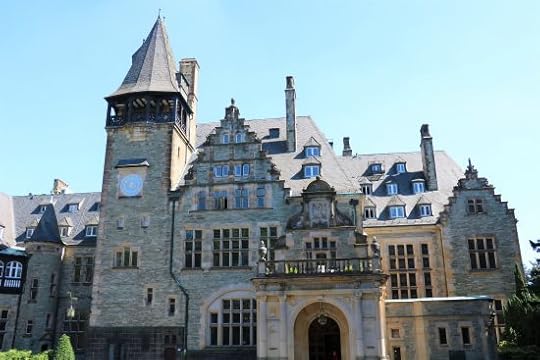 Friedrichshof (Photo by Moniek Bloks)
Friedrichshof (Photo by Moniek Bloks) Photo by Moniek Bloks
Photo by Moniek BloksIn the spring of 1894, her home at Kronberg was finally ready, and she moved into the aptly named Schloss Friedrichshof. She finally had a home of her own, and she was very proud of it. She would spend a large part of the year there, and it became a gathering place for family. Her relationship with her son even seemed to improve somewhat, and by 1896 she was writing to her mother, “He is quite nice to me, and I have forgiven him with all my heart the cruel wrong he did me, but of course we meet seldom, and I am a complete outsider.”3 She may have forgiven him, but she had not forgotten all that he had done.
By 1899, she had begun feeling unwell and dizzy. She was diagnosed with breast cancer, and it was already inoperable. She told just a few people and wrote to her mother, “I assure you my thoughts are not incessantly dwelling in a morbid way on my own health! It would be foolish & useless, and could only be hurtful.”4 She eventually told her children of her illness, even Wilhelm but not Charlotte, who was a gossip. Victoria did not return to England for her mother’s 80th birthday celebrations as she was feeling sick. Soon the cancer had spread to her spine, and she was in a lot of pain. The doctors advised a warmer climate, and she travelled to Italy, despite not wanting to leave Friedrichshof. Sitting and laying down hurt her more than walking and so she was outside a lot. She received hot poultices and sulfur baths as a treatment. By early 1900, she was in almost constant pain. She returned to her beloved Friedrichshof. She wrote to Sophie, “My dear Friedrichshof is so charming. It looks so tidy, clean, well-kept and in apple-pie order. It seems as if I had never been away, though it is sad indeed to be wheeled about in a chair like an old, old lady and carried up and down stairs like a child, here, where I have always been so active.”5
By the summer, she was bedridden and had spasms every few hours during which she could only “scream and groan.”6 Her mother too was seriously ill. On Christmas Day, she wrote to her mother, “I wish with all my heart that all my suffering and discomfort would do for us both & that you might be spared everything that is disagreeable.”7 On 6 January, Queen Victoria wrote one final letter to her daughter, ending with the words, “God bless you, darling child.” On 22 January 1901, Queen Victoria passed away. Victoria wrote to Sophie, “Words cannot describe my agony of mind at this overwhelming sorrow. Oh, my beloved Mama! Is she really gone? Gone from us all to whom she was such a comfort and support. To have lost her seems so impossible – and I far away could not see her dear face or kiss her dear hand once more… What a Queen she was, and what a woman! What will life be to me without her… In the bitterness of my grief, I must admit that it was a mercy she did not suffer pain and that she had no long illness, a peaceful end.”8
By then, Victoria was taking morphine to help with the pain, and she deteriorated during the spring. She wrote to Sophie, “The attacks of pains so violent, the struggle for breath so dreadful when in bed or lying down, most distressing…”9 Nevertheless, she lived for two months more, in such agony that sentries outside begged to be moved further away so they would not hear her scream. As her body wasted away, she drew up her will, leaving her beloved Friedrichshof to Margaret. She died on 5 August 1901. Once more, Wilhelm ransacked her rooms for her private papers, and again, he found none. She had already had them whisked away to England.
On the 100th anniversary of her birth, her son Wilhelm – by then exiled in Doorn – wrote pitifully, “Today is the 100th birthday of my mother! No notice is taken of it at home! No ‘memorial service’ or… committee to remember her marvellous work for the … welfare of our German people… Nobody of the new generation knows anything about her.”10 He was still too self-centred to realise his role in how that had come about. Perhaps Victoria should be remembered by the words she used to describe her own mother, “What a Queen she was, and what a woman!”
The post The Year of Queen Victoria – Victoria, Princess Royal (Part five) appeared first on History of Royal Women.
November 24, 2019
The Year of Queen Victoria – Victoria, Princess Royal (Part four)
It was now a waiting game before the Friedrich and Victoria could ascend the throne. Friedrich’s father had been in bad health since the beginning of 1885, suffering little strokes. However, in January 1887, Friedrich himself began having persistent hoarseness, which was first thought to be a cold but by the spring, it had not improved.
A professor from the University of Berlin was called in and he discovered a swelling on the lower part of his left vocal cord. For ten agonising days, the professor poked around with a wire snare down Friedrich’s throat, trying to catch hold of the mass. When that didn’t work, he used a circular knife. However, that also failed, and he resorted to cauterising the mass with a hot platinum wire. In April, Friedrich and Victoria left for the spa at Ems where he could rest his voice. His cough improved, but the tumour grew larger, and the vocal cord was no longer moving normally. A further six doctors were called in, who decided that the growth was cancerous and one of them should perform a laryngotomy to remove the growth. The operation did not go ahead as his father was unwilling to give his permission. Dr Morell Mackenzie, a throat specialist, was then summoned to Berlin. He found “a growth about the size of a split pea” and recommended a biopsy. He performed the biopsy himself and sent the tissue to Professor Virchow. He determined that there was no malignancy in the tissue sent to him, but he needed a large sample to be sure. However, Morell Mackenzie was unable to take a larger sample.
Throughout all of this, Victoria was between hope and despair. She wrote to her mother, “Of course the suspense is very trying to me, but I own the hope held out is a very great relief & as I am sanguine by nature, I easily cling to it… I cannot bring myself to believe the worst, it seems too cruel!”1 In June, Morell Mackenzie finally succeeded in removing a larger part of the growth, but the diagnosis remained the same. Friedrich would stay under his care – to the relief of the German doctors who preferred not be responsible. Victoria and Friedrich prepared for a trip to England, also to join in the celebrations for Queen Victoria’s Golden Jubilee. It also gave them the chance to bring their private papers to England for safekeeping. During their time in England, Morell Mackenzie managed to remove all of the remaining growth on Friedrich’s vocal cords. The crisis appeared to be over, and Queen Victoria bestowed a knighthood on the doctor.
In the autumn of 1887, which Friedrich and Victoria spent mostly in Italy, fresh swelling was found in a different spot. To the doctors, it looked malignant. He later broke down, saying, “To think that I should have such a horrid, disgusting illness! That I shall be the object of disgust to everyone, and a burden to you all! I had so hoped to be of use to my country. Why is heaven so cruel to me! What have I do to be thus stricken and condemned! What will become of you? I have nothing to leave you! What will become of the country?”2 When the cancer diagnosis became public knowledge, it became clear that the crown was destined to pass from grandfather to grandson, perhaps with a small detour. Friedrich’s liberal policies would not see the light of day. Victoria saw her life’s work go down the drain.
As the days dragged on, Friedrich wore bags of ice around his neck when the swelling became worse, and he sucked on ice cubes. Nevertheless, he continued his work to prepare to take over for his dying father. In January 1888, he began having trouble breathing, and a tracheotomy was performed. Victoria wrote to her mother, “Dear Fritz is dozing & I am at his bedside. Of course, he cannot speak! He breathes quite well now, but the sound of the air through that canula (sic) is of course very horrid! I own I was in terror & agonies…”3 Friedrich and Victoria were still in Italy when his father Emperor Wilhelm I died on 9 March 1888. Friedrich immediately bestowed the Order of the Black Eagle on his wife and sat down to write the announcement of his accession.
Queen Victoria wrote to her daughter, “My own dear Empress Victoria… may God bless her! You know how little I care for rank or titles, but I cannot deny that after all that has been done and said, I am thankful and proud that dear Fritz & you should have come to the throne.”4 Victoria and Friedrich were already on their way back to Berlin, arrived there on 11 March by special train. They had decided to live at Charlottenburg.
 Charlottenburg (Photo by Moniek Bloks)
Charlottenburg (Photo by Moniek Bloks)On 12 April 1888, Friedrich noticed that the space through which he could breathe appeared to have gotten smaller. Apparently, cancer cells had begun to grow around the cannula, and soon he was “in state of suffocation”, and an immediate operation was performed to insert a new cannula. Although his breathing improved, he soon began having a fever and on 20 April several abscesses burst. Their son Wilhelm – eagerly awaiting his accession – had already ordered secretly that no one should be let out of Charlottenburg upon his father’s passing. Friedrich then appeared at the window to acknowledge the gathered crowd and the people began to cheer.
Queen Victoria had begun to plan for a trip to Germany, which now required more haste. She arrived at Charlottenburg on 24 April, and Friedrich was by then feeling a little better. Victoria confided in her mother, and Queen Victoria later wrote, “Vicky took me back to my room and talked some time very sadly about the future, breaking down completely. Her despair at what she seems to look on as the certain end is terrible. I saw Sir M. Mackenzie, and he said he thought the fever, which was less… would never leave dear Fritz, and that he would not live above a few weeks, possibly two months, but hardly three!!”5
Friedrich pulled himself together for the wedding of their second son Heinrich, to Princess Irene of Hesse. Victoria wrote, “He looked so handsome and dignified but so thin and pale… I kept back my tears with difficulty and felt with bitter sorrow that we should never again see him attending such a festive gathering as Emperor!”6
At the beginning of June, Friedrich and Victoria moved to the New Palace in Potsdam. Friedrich took up the use of rooms on the ground floor so that he would not have to climb stairs. He was clearly dying now and did not have much time left. Victoria rarely left his room, only going upstairs to her own rooms to sleep. At 3 A.M. on 14 June, Victoria was awakened by the doctor. Friedrich’s pulse had grown weaker, and his fever was raging. Victoria sent for their son Heinrich and his new wife Irene as well as their daughter Charlotte and her husband, Bernhard. Crown Prince Wilhelm arrived with his wife and had already begun giving out orders. Victoria slept on a chaise longue just outside the door that night.
The final struggle began at 10 in the morning on 15 June. Victoria sat on his bed and talked softly to him. He became unconscious and died shortly after 11 A.M. After just 99 days; their reign was over.
Part five coming soon.
The post The Year of Queen Victoria – Victoria, Princess Royal (Part four) appeared first on History of Royal Women.
November 23, 2019
The Year of Queen Victoria – Victoria, Princess Royal (Part three)
Just a year after little Sigismund’s death, Victoria found herself pregnant again. She was depressed at the anniversary of her son’s death, but her mother lovingly wrote to her, “Your Darling – God took to him himself, and he is safe & happy! You will see him again there, where there is no sorrow or pain or parting & if you would but dwell on that (as I do) & have faith & trust you would not have had that sad and agonising repining… I say all this in love & affection & in perfect sympathy with your loss.”1 On 10 February 1868, Victoria gave birth to her sixth child – a son named Waldemar.
At the end of 1868, Victoria, Friedrich and three of their children spent Christmas in England with Queen Victoria. Her meddling mother-in-law was soon lobbying for her return, demanding that she return before Christmas. Her father-in-law even wrote to Queen Victoria complaining of their long absence. Victoria had not been home for three years. In January after their return, her brother, the Prince of Wales and his wife Alexandra of Denmark paid a visit to Germany.
On 14 June 1870, Victoria gave birth to her seventh child – a daughter named Sophie. Around that time, Friedrich was headed back to the front and – not wanting a painful parting – he had slipped out during the night, leaving a note for Victoria. Victoria wrote to her mother, “The thought was so kind and yet now I feel as if my heart would break – he is gone, without a kiss or a word of farewell & I do not know whether I shall ever see him again!”2 Victoria herself monitored the construction of new hospitals and took an interest in caring for the wounded. However, her efforts were not appreciated in Berlin and on her 30th birthday on 21 November 1870; she was only visited by her mother-in-law. Friedrich was horrified when he heard of how his wife had been treated.
On 18 January 1871, the founding of the new German empire took place, and Victoria could now look forward to not only becoming a Queen but also an Empress. Friedrich wrote to his wife, “I am convinced that he (her father Prince Albert) would have rejoiced over recent changes. However, he would not have approved of the methods whereby unification was achieved any more than you and I.”3 Later that same year, she was finally able to visit her mother again and they spent much of the summer and autumn and Schloss Wilhelmshöhe because of a smallpox epidemic in Berlin.
 Schloss Wilhelmshöhe (Photo by Moniek Bloks)
Schloss Wilhelmshöhe (Photo by Moniek Bloks)Victoria gave birth to her eight and final child – a daughter named Margaret – on 22 April 1872. She was initially disappointed that it wasn’t a boy but later wrote, “for myself alone, a little girl is much nicer.”4
Victoria founded the Victoria Lyceum where girls – who were still barred from attending universities – could attend lectures. Friedrich supported her in this and openly favoured the advancement of women in certain areas. However, they still lived in a society that wanted women to limit their activities to “Kinder, Kirche and Küche” – Children, church and kitchen. This was used against them and portrayed Victoria as a domineering wife and Friedrich as the henpecked husband. She wrote to her husband, “I am English, foreign… and I dominate you… I don’t take the position… considered proper and suitable for a princess at the Berlin court… A kind of higher lady… who dresses well, looks pretty… is a doll in her own house… does not have the cheek to deal with her household or her children, and thus does not spoil the children’s ‘Prussian upbringing.'”5 She would always be an outsider in Germany.
Victoria was particularly close to her sister Alice who had married Prince Louis of Hesse (later Louis IV, Grand Duke of Hesse). Alice’s family was hit by diphtheria in the autumn of 1878. Her little girl May was the first die, and while everyone else seemed to get better, Alice got worse and passed away on 14 December 1878 – also the anniversary of their father’s death. Victoria wrote to her mother, “Our darling! I can hardly bear to write her dear name – was my particular sister… I think of the dear house now so desolate and empty… It was the only place in Germany except Coburg where I loved to go & which seemed a bit of a home!”6 Victoria was forbidden to attend her sister’s funeral because of a fear of infection. More heartbreak was to come when Victoria’s own son Waldemar also fell ill with diphtheria. Victoria cared for him during the illness. Tragically, he died on 27 March 1879 at the age of 11. She later wrote, “We endeavour to bear God’s decree with resignation, but we cannot even now become reconciled to the loss of another son… a son… who justified our highest hopes, and already displayed character at an early age.”7
Her relationship with her surviving children was complicated. She could be a demanding mother, and her three eldest children had turned out to be “complete Prussians” to her regret.8 In 1877, her eldest son turned 18 years old, and he graduated from the gymnasium. He then entered the University of Bonn. He soon had his eye on Auguste Viktoria of Schleswig-Holstein-Sonderburg-Augustenburg – the granddaughter of Queen Victoria’s half-sister Feodora. They were married on 27 February 1881. Charlotte was actually the first of her children to marry – to The Hereditary Prince of Saxe-Meiningen in 1878. Victoria’s first grandchild – Feodora – was born in 1879. Meanwhile, Victoria was on the edge of a full-on breakdown, and she left for Italy – after an intense fight over it with her parents-in-law – with her three young daughters.
The air in Italy did her good, and she stayed there from October until May the following year. She even removed her mourning clothes and hated herself for it. She had slowly passed into middle age and just before her 40th birthday she wrote to her mother that she was “growing very unsightly… have lost almost all my hair & what remains has turned very grey; my face is full of lines and wrinkles especially round the eyes & mouth, and having no good features to boast of, I really am an annoyance… when I look at myself in the glass.”9
Part four coming soon.
The post The Year of Queen Victoria – Victoria, Princess Royal (Part three) appeared first on History of Royal Women.
November 22, 2019
Book News December 2019
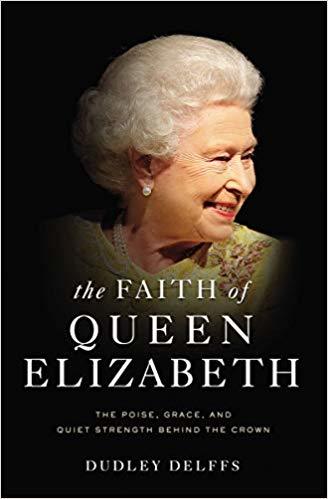
The Faith of Queen Elizabeth
Hardcover – 31 October 2019 (UK) & 3 December 2019 (US)
Discover the inspiring spiritual legacy of Queen Elizabeth II, the longest reigning monarch in British history. Sharing a behind-the-scenes glimpse into the life of this notoriously private monarch, The Faith of Queen Elizabeth features intimate stories and inspiring reflections on the personal faith behind the Crown. With testimonies from historic figures such as Winston Churchill, Billy Graham, Mother Teresa, and Margaret Thatcher, this magnificent tribute explores the faith of the world’s most famous Queen – and the King she serves. Icon, matriarch, reformer, and the longest-reigning monarch in British history – Queen Elizabeth II intrigues millions around the world with her royal heritage, inspirational character, and profound faith, especially as depicted in award-winning films such as The Queen and the wildly popular Netflix series The Crown. With a reign that bridges the twentieth and twenty-first centuries, Queen Elizabeth has become the definition of stability, faithfulness, and dignity. Fearlessly, she led her country into the modern age with a balance of historical tradition and entrepreneurial initiative, public service and private devotion. Nearing seven decades on the throne, the Queen has faced many personal and public storms – an early and surprising ascension to the throne, the dissolution of the British Empire, political upheavals, international crises, national tragedies, family deaths, and the tabloid travails of her children and grandchildren. But throughout all her trials and triumphs, Her Majesty credits her personal faith in Jesus Christ as the steadying anchor to her life and reign. In this spiritual biography, Dudley Delffs unpacks the secret behind Her Majesty’s personal devotion and public service, giving you a fuller, richer picture of the woman who’s led a nation with unwavering faith and resolve.
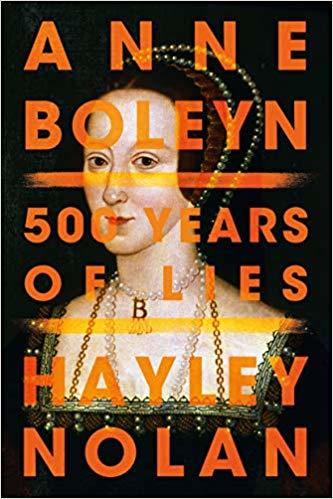
Anne Boleyn: 500 Years of Lies
Paperback – 1 December 2019 (UK & US)
History has lied.
Anne Boleyn has been sold to us as a dark figure, a scheming seductress who bewitched Henry VIII into divorcing his queen and his church in an unprecedented display of passion. Quite the tragic love story, right?
Wrong.
In this electrifying exposé, Hayley Nolan explores for the first time the full, uncensored evidence of Anne Boleyn’s life and relationship with Henry VIII, revealing the shocking suppression of a powerful woman.
So leave all notions of outdated and romanticised folklore at the door and forget what you think you know about one of the Tudors’ most notorious queens. She may have been silenced for centuries, but this urgent book ensures Anne Boleyn’s voice is being heard now.
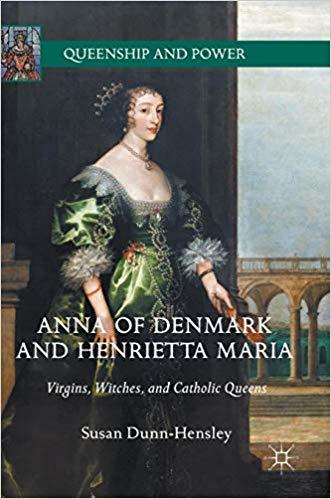
Anna of Denmark and Henrietta Maria: Virgins, Witches, and Catholic Queens (Queenship and Power)
Paperback – 4 December 2019 (US) & 6 November 2019 (UK)
This book examines how early Stuart queens navigated their roles as political players and artistic patrons in a culture deeply conflicted about the legitimacy of female authority. Anna of Denmark and Henrietta Maria both employed powerful female archetypes such as Amazons and the Virgin Mary in court performances. Susan Dunn-Hensley analyzes how darker images of usurping, contaminating women, epitomized by the witch, often merged with these celebratory depictions. By tracing these competing representations through the Jacobean and Caroline periods, Dunn-Hensley peels back layers of misogyny from historical scholarship and points to rich new lines of inquiry. Few have written about Anna’s religious beliefs, and comparing her Catholicism with Henrietta Maria’s illuminates the ways in which both women were politically subversive. This book offers an important corrective to centuries of negative representation, and contributes to a fuller understanding of the role of queenship in the English Civil War and the fall of the Stuart monarchy.
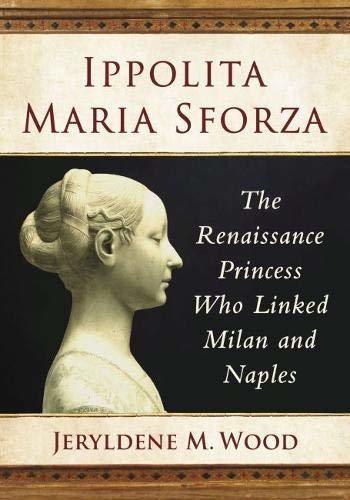
Ippolita Maria Sforza: The Renaissance Princess Who Linked Milan and Naples
Paperback – 3 December 2019 (US) & 28 February 2020 (UK)
In April 1455, ten-year-old Ippolita Maria Sforza, a daughter of the Duke and Duchess of Milan, was betrothed to the seven-year-old crown prince of the Kingdom of Naples as a symbol of peace and reconciliation between the two rival states. This first full-scale biography of Ippolita Maria follows her life as it unfolds at the rival courts of Milan and Naples amid a cast of characters whose political intrigues too often provoked assassinations, insurrections, and wars. She was conscious of her duty to preserve peace despite the strains created by her husband’s arrogance, her father-in-law’s duplicity, and her Milanese brothers’ contentiousness. The duchess’ intelligence and charm calmed the habitual discord between her families, and in time, her diplomatic savvy and her great friendship with Lorenzo de’ Medici of Florence made her a key player in the volatile politics of the peninsula for almost 20 years.
Drawing on her letters and contemporary chronicles, memoirs, and texts, this biography offers a rare look into the private life of a Renaissance woman who attempted to preserve a sense of self while coping with a tempestuous marriage, dutifully giving birth to three children, and supervising a large household under trying political circumstances.

The Last Princess: The Devoted Life of Queen Victoria’s Youngest Daughter
Hardcover – 12 December 2019 (UK & US)
Beatrice Mary Victoria Feodore, later Princess Henry of Battenberg, was the last-born – in 1866 – of Victoria and Albert’s children, and she would outlive all of her siblings to die as recently as 1944. Her childhood coincided with her mother’s extended period of mourning for her prematurely deceased husband, a circumstance which may have contributed to Victoria’s determination to keep her youngest daughter as close to her as possible.
She would eventually marry Prince Henry of Battenberg in 1885, but only after overcoming her mother’s opposition to their union. Beatrice remained Queen Victoria’s favourite among her five daughters, and became her mother’s constant companion and later her literary executor, spending the years that followed Victoria’s death in 1901 editing her mother’s journals and voluminous correspondence.
Matthew Dennison’s elegantly written biography restores Beatrice to her rightful place as a key figure in the history of the Victorian age, and paints a touching and revealing portrait of the life and family of Britain’s second-longest-reigning monarch.
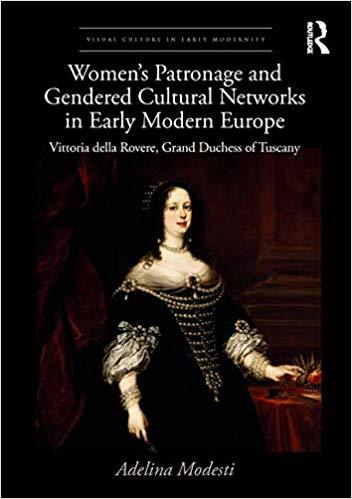
Women’s Patronage and Gendered Cultural Networks in Early Modern Europe: Vittoria della Rovere, Grand Duchess of Tuscany (Visual Culture in Early Modernity)
Hardcover – 20 December 2019 (US & UK)
This book examines the socio-cultural networks between the courts of early modern Italy and Europe, focusing on the Florentine Medici court, and the cultural patronage and international gendered networks developed by the Grand Duchess of Tuscany, Vittoria della Rovere.
Adelina Modesti uses Grand Duchess Vittoria as an exemplar of pan-European matronage and proposes a new matrilineal model of patronage in the early modern period, one in which women become not only the mediators but also the architects of public taste and the transmitters of cultural capital. The book will be the first comprehensive monographic study of this important cultural figure.
This study will be of interest to scholars working in art history, gender studies, Renaissance studies, and seventeenth century Italy.

The Diary of Lady Murasaki (Dover Thrift Editions)
Paperback – 18 December 2019 (US) & 31 January 2020 (UK)
Derived from the journals of an empress’s tutor and companion, this unique book offers rare glimpses of court life in eleventh-century Japan. Lady Murasaki recounts episodes of drama and intrigue among courtiers as well as the elaborate rituals related to the birth of a prince. Her observations, expressed with great subtlety, offer penetrating and timeless insights into human nature.
Murasaki Shikibu (circa AD 973–1025) served among the gifted poets and writers of the imperial court during the Heian period. She and other women of the era were instrumental in developing Japanese as a written language, and her masterpiece, The Tale of Genji, is regarded as the world’s first novel. Lady Murasaki’s diary reveals the role of books in her society, including the laborious copying of texts and their high status as treasured gifts. This translation is accompanied by a Foreword from American poet and Japanophile Amy Lowell.
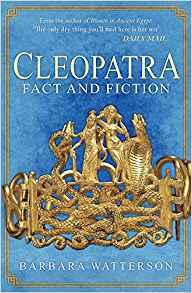
Cleopatra: Fact and Fiction
Paperback – 15 December 2019 (UK) & 1 May 2020 (US)
Cleopatra is one of the greatest romantic figures in history, the queen of Egypt whose beauty and allure is legendary. We think we know her story, but our image of her is largely gleaned from the film starring Elizabeth Taylor or from Shakespeare’s Antony and Cleopatra. Shakespeare himself was inspired by Plutarch, who was only sixteen years old when Cleopatra died. So her story was never based purely on fact.
In the middle of the first century BC, Cleopatra caught the attention of Rome by captivating the two most powerful Romans of the day, Julius Caesar and Mark Antony. She outlived both and attempted to suborn a third, her mortal enemy, Octavius Caesar, the first of the Roman Emperors. Having failed to do so she destroyed herself.
We can tell that Cleopatra was highly intelligent and politically astute and that she wielded great power. But Roman histories heaped opprobrium upon her. Cleopatra’s detractors claimed that she used her feminine wiles to entrap Caesar and Antony. She came to symbolise the danger of female influence to the safety of Rome – and indeed to the male-dominated world.
Plutarch observed that Cleopatra’s actual beauty was apparently not in itself so remarkable. It was the impact of her presence that was irresistible. Cleopatra: Fact and Fiction sheds fascinating light on the woman behind the image.
The fact that Cleopatra’s legend still burns bright today is proof of Shakespeare’s description of her as a lady of infinite variety whom custom cannot stale.
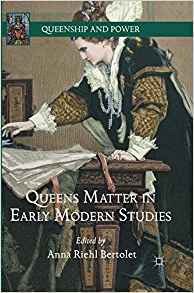
Queens Matter in Early Modern Studies (Queenship and Power)
Paperback – 5 December 2019 (UK) & 30 August 2018 (US)
The essays in this book traverse two centuries of queens and their afterlives―historical, mythological, and literary. They speak of the significant and subtle ways that queens leave their mark on the culture they inhabit, focusing on gender, marriage, national identity, diplomacy, and representations of queens in literature. Elizabeth I looms large in this volume, but the interrogation of queenship extends from Elizabeth’s historical counterparts, such as Anne Boleyn and Catherine de Medici, to her fictional echoes in the pages of John Lyly, Edmund Spenser, William Shakespeare, Mary Wroth, John Milton, and Margaret Cavendish. Celebrating and building on the renowned scholarship of Carole Levin, Queens Matter in Early Modern Studies exemplifies a range of innovative approaches to examining women and power in the early modern period.
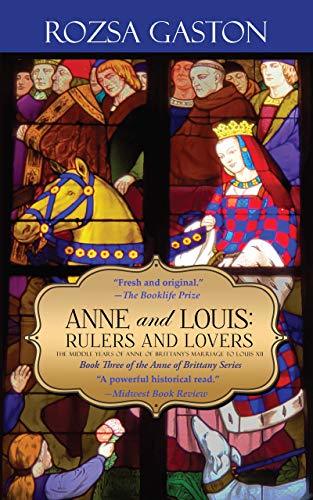
Anne and Louis: Rulers and Lovers (Anne of Brittany Series Book 3)
Kindle Edition – 12 December 2019 (UK & US)
In 1501 Anne of Brittany devises the perfect match for her only child by Louis XII, King of France. Their daughter will become the most powerful woman in Europe if she marries the future Holy Roman Emperor. But Louis balks. Instead, he wishes her to marry his successor. How else to keep his own bloodline on the throne?
Anne is incensed. Why should her daughter not rule Brittany one day as her successor? Better to be a decision maker as ruler of Brittany, where women are not forbidden to rule, than only to sit next to France’s future king as queen-consort, bereft of political power.
Anne wants Louis to stay out of Italy, but Louis is determined to gain a foothold there for France. Joining Ferdinand of Spain in a secret pact to partition southern Italy, Louis soon discovers, with devastating results, that the age of chivalry is over.
As lovers, Anne and Louis are in accord. As rulers, their aims differ. Who will prevail?
The post Book News December 2019 appeared first on History of Royal Women.
November 21, 2019
The Year of Queen Victoria – Victoria, Princess Royal (Part two)
Victoria spent her last day at home – 1 February 1858 – with her mother and 9-month-old sister Beatrice. As she left the next morning, it began to snow. Queen Victoria gathered the entire family in the Audience Room at Buckingham Palace to say goodbye to her eldest daughter. Victoria was accompanied by her father , and her brother the Prince of Wales and Prince Arthur and also her mother’s uncle the Duke of Cambridge. Victoria and her new husband were driven to Gravesend where they board the royal yacht. On board the royal yacht, Victoria said goodbye to her father as she sobbed. Her father wrote to her after she had left, “I am not of a demonstrative nature, and therefore you can hardly know how dear you have always been to me, and what a void you have left behind in my heart.”1
They received a warm welcome in Berlin and Victoria managed to enchant everyone. When she arrived there, her husband’s uncle was King Friedrich Wilhelm IV. His marriage to Elisabeth Ludovika of Bavaria had remained childless, and so the crown was destined to pass to her husband’s father and then to Friedrich himself. It was quite a different family from the warm and cosy one she had grown up in, and there was tension all around. Her husband’s duties with the Prussian army would keep him away from home a lot of the time.
Nevertheless, they quickly established a routine. They rose together at eight and read together before breakfast. Friedrich then left to attend to his military duties while Victoria read papers, letters and met with members of her household. After her husband returned, they would have lessons together. Evenings were often with court functions.
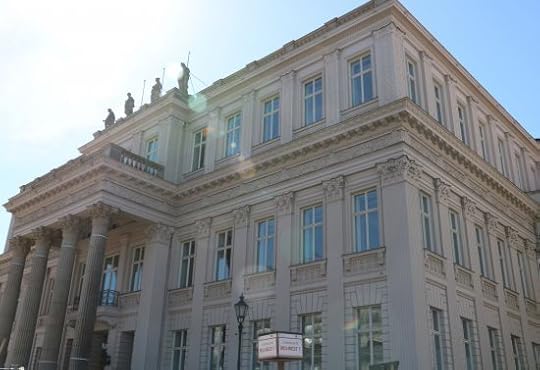 Crown Prince’s Palace (Photo by Moniek Bloks)
Crown Prince’s Palace (Photo by Moniek Bloks)Victoria soon found herself pregnant with her first child. Queen Victoria was not amused, but her daughter took it in stride. “That you regret my being (perhaps) in this state I can understand, but I assure you, dear Mama, I think it no great hardship… if it is really true… you know I love little children so much… I own one must feel rather proud to think that one has given life to an immortal soul.”2 In November 1858, they finally moved into the Kronprinzenpalais (Crown Prince’s Palais) in Berlin, across the street from her parents-in-law. It was at their new palace that she gave birth to her first child – a son named Wilhelm. It was an extremely difficult birth that had nearly cost both their lives. Wilhelm was born ‘seemingly dead’ but eventually started to breathe. His left arm was also left hanging from its socket, and the nerve damage would have life long effects. It was a miracle that they had both survived. Victoria took a long time to recover from the horrendous birth.
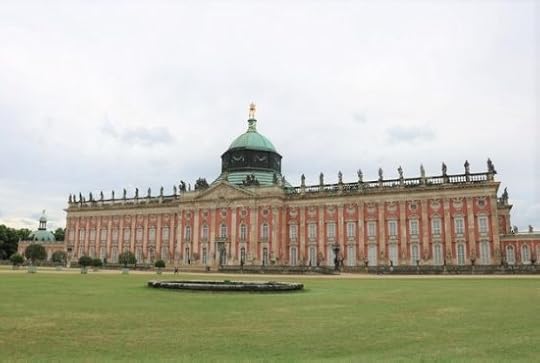 New Palace in Potsdam (Photo by Moniek Bloks)
New Palace in Potsdam (Photo by Moniek Bloks)By the end of the year, Victoria was pregnant again. This time, Victoria asked her mother to have her doctor send over some chloroform directly. On 24 July 1860, at their summer residence the New Palace in Potsdam, Victoria gave birth to a daughter – named Charlotte. This time the delivery was much easier. At the end of the year, it became clear that Friedrich’s uncle the King was dying. They raced to the Palace of Sanssouci and were there when he passed away on 2 January 1861. Friedrich’s father was now the new King and Victoria and Friedrich were now the Crown Prince and Princess. However, worse was yet to come. In March, her grandmother, the Duchess of Kent passed away, followed by her father Prince Albert in December. When the telegram informing her of her father’s death arrived, she asked, “why has the earth not swallowed me up? He was too great, too perfect for earth, that adored father whom I ever worshipped with more than a daughter’s affection.”3 She was finally given permission to visit England three months after her father’s death.
In August 1862, Victoria gave birth to a second son – named Heinrich – followed by a third son – named Sigismund – in 1864. She finally felt confident enough to defy orders and nursed Sigismund herself. Queen Victoria was angry, but the Crown Princess received the support of her aunt Feodora who wrote, “I am sorry to find that Vicky’s determination to nurse her baby makes you so angry, the Queen of Prussia feels the same as you. I have no opinion… as I have always felt it a duty for a mother to nurse her child if she can and if the doctors approve.”4 On 12 April 1866, Victoria gave birth to her fifth child – a daughter named Viktoria. Queen Victoria was delighted to have another girl in the family named after her and wrote, “I am much pleased & touched that the dear, new baby (and long may she remain the Baby!) is to be called after me as I cannot deny that it pained me very much that 4 children were born without one being called after either of your parents.”5 Victoria suffered from postpartum depression after Viktoria’s birth, and it did not help that Friedrich was going off to war against Austria.
On 18 June 1866, Prince Sigismund died of meningitis. A heartbroken Victoria wrote to her mother, “A little child is no loss to the rest of the world, none miss it, but to me it is a part of myself… my little Siggie’s loss has cast a gloom over this House and over my… whole existence which will never quite wear off.”6 Her husband was away and although he was given leave he refused to go, saying, “I am in the service of the fatherland. I would never forgive myself if we were attacked when I was absent from my post.”7 Victoria did not understand him at all. Two weeks later, Victoria took her four surviving children to the Baltic. She sculpted a waxen imagine of her son and placed it in his crib. Victoria found the strength to turn to the war work and turned several sections of their palace in Berlin into a private hospital. However, the constant death and sorrow around her only made her more depressed.
Her husband’s victory at the Battle of Köninggrätz brought her somewhat back to life.
Part three coming soon.
The post The Year of Queen Victoria – Victoria, Princess Royal (Part two) appeared first on History of Royal Women.
November 20, 2019
The Year of Queen Victoria – Victoria, Princess Royal (Part one)
Victoria, Princess Royal was born on 21 November 1840 at Buckingham Palace to Queen Victoria and Prince Albert. Queen Victoria later recorded in her journal, “Just before the early hours of the morning of the 21st I felt very uncomfortable & with difficulty aroused Albert… Tried to sleep again, but by 4, I got very bad & both the doctors arrived. My beloved Albert was so dear & kind. Locock said the baby was on the way & everything was all right. We both expressed joy that the event was at hand & I did not feel at all nervous.”1 Just 23 years earlier, Princess Charlotte – heir to King George IV – had died giving birth to a stillborn son. The relief at the birth of a healthy child for Queen Victoria was great.
Both Queen Victoria and Prince Albert were disappointed that she was a girl with Queen Victoria saying, “Never mind, the next will be a Prince.”2 For the first eight days of her life, young Victoria lived in the royal crib in her mother’s dressing room. She was christened on 10 February 1841 – also her parents’ first wedding anniversary – in a silver-gilt lily font which had been designed by her father. From her birth to the birth of her younger brother, young Victoria was the heiress presumptive to the British throne. On 19 January 1841, she was made Princess Royal.
Victoria’s education began when she was just 18 months old with the arrival of a French tutor. Victoria was soon known as a clever and quick child. Over the next years, she would be joined in the nursery by 8 siblings: the future Edward VII (born 1841), Alice (born 1843), Alfred, (born 1844), Helena (born 1846), Louise (born 1848), Arthur (born 1850), Leopold (born 1853) and Beatrice (born 1857). Shortly after her sixth birthday, she entered elementary education under the authority of Sarah Anne Hildyard. She received lessons in arithmetic, dictation, poetry, history, geography, scripture, German and French. She also had music and drawing lessons. Unlike her younger brother, young Victoria thrived.
Victoria was only ten years old when she met her future husband Prince Friedrich Wilhelm of Prussia, the future Friedrich III, Germany Emperor. The 19-year-old Prince was invited to the opening of her father’s grand project, the Great Exhibition. No one spoke to her of marriage, but the intentions were clear between both sets of parents. Victoria became more involved with court life after this after all this was a role she would be intended to fulfil in the future. She was present when Emperor Napoléon III and his wife Eugénie visited Windsor Castle in 1855. Her mother later wrote in her journal, “Vicky behaved extremely well, making beautiful curtsies, and was very much praised by the Emperor and Empress, whom Vicky raves about.”3 She also accompanied her parents on the return visit to Paris that summer. Just weeks after their return from Paris, Friedrich Wilhelm was back for another visit. She was charming and chatty, and soon Friedrich Wilhelm expressed the wish to make Victoria his wife. Queen Victoria told him that she did not want her daughter to marry until she was 17, but otherwise, she approved of the match. He waited to propose to Victoria until the following spring when she was confirmed.
Queen Victoria worried that the people might think Victoria too young for an engagement and wrote to her half-sister Feodora, “Poor dear child, I often tremble when I think how much is expected of her!”4 Now that Victoria was confirmed, she entered her first season, and her parents threw her a coming-out party to which her fiance was also invited. As the wedding approached, Victoria underwent extra tutoring from her father, while her mother fussed over her trousseau – which would eventually consist of over 100 packing cases. Her dowry was settled on £40,000 with an income of £8,000. The wedding date was set for 25 January 1858, and it took place in London and not in Berlin. Queen Victoria said, “Whatever may be the usual practice of Prussian Princes, it is not every day that one marries the eldest daughter of the Queen of England. The question, therefore, must be considered as settled and closed.”5
On the day of the wedding, Queen Victoria invited her daughter to her rooms after breakfast, and they had their hair done. Victoria wore a white silk moiré gown over a petticoat flounced in lace with orange blossoms and myrtle. She wore a train trimmed with white satin ribbons and lace. A lace veil was held in place by a wreath, and she also wore a diamond necklace, earrings and a brooch. Just before leaving for the chapel, Victoria gave her mother a brooch with a lock of her hair. Thousands lined the streets from Buckingham Palace to St. James’s Chapel. Queen Victoria later wrote, “My last fear of being overcome vanished, when I saw Vicky’s calm & composed manner. It looked beautiful seeing her kneeling beside Fritz, their hands joined, her long train born (sic) by the eight young ladies… hovering round her, as they knelt near her. How it reminded me of my having similarly, proudly, tenderly, confidently knelt beside my beloved Albert, in the very same spot…”6 They walked out of the chapel to Mendelsohn’s Wedding March and took place in their carriage for the ride back to Buckingham Palace. That evening, Queen Victoria gave a state banquet as Victoria, and Friedrich Wilhelm travelled to Windsor Castle for a two-day honeymoon.
From Windsor Castle, Victoria wrote to her mother, “I cannot let this day close, which has brought me so much happiness without one more word to you, one more word of the deepest tenderest love. Can I ever forget your kindness to me today, or shall I ever be able to express all my gratitude to you and dear Papa, as I feel it!”7
Part two coming soon.
The post The Year of Queen Victoria – Victoria, Princess Royal (Part one) appeared first on History of Royal Women.



